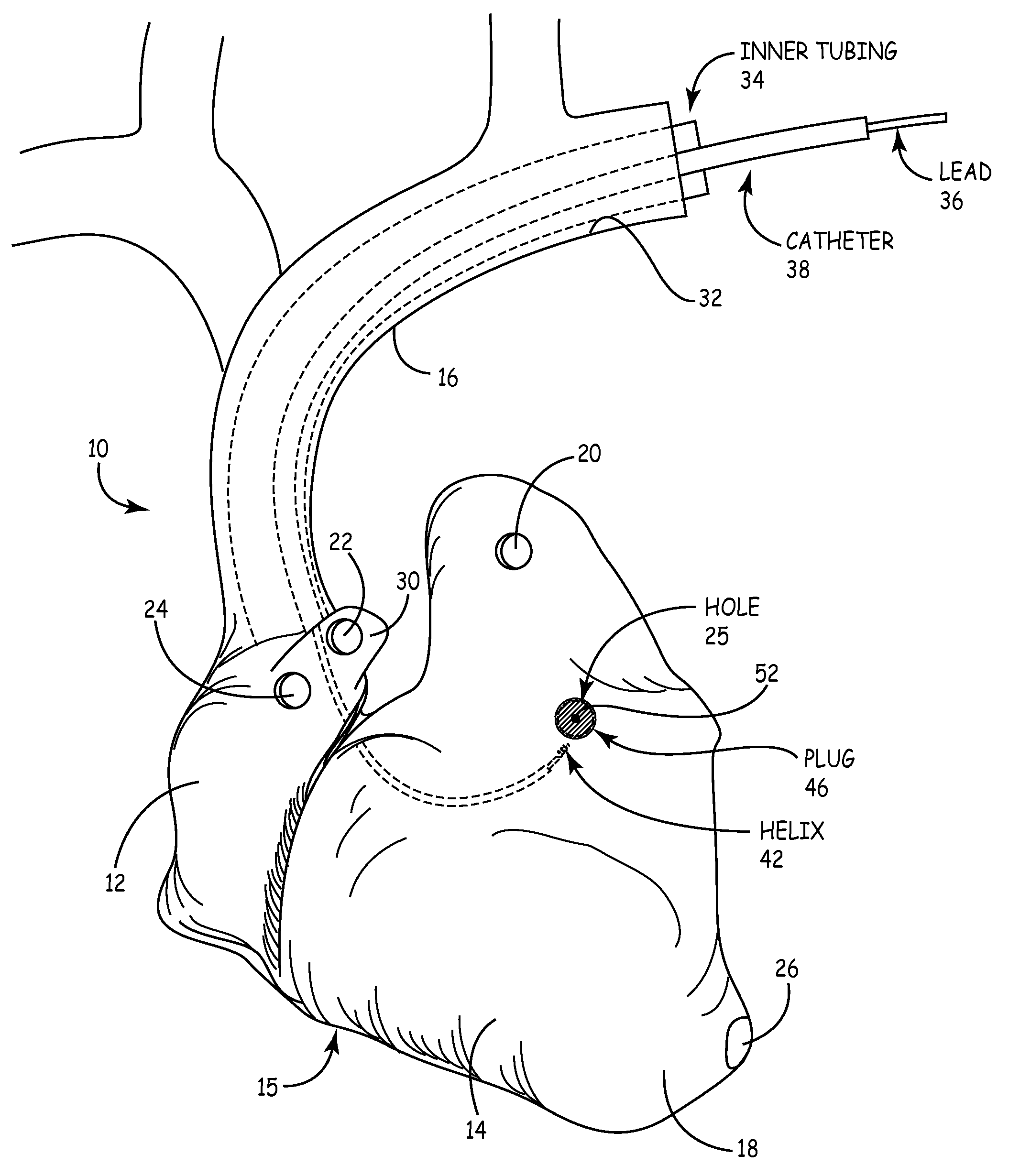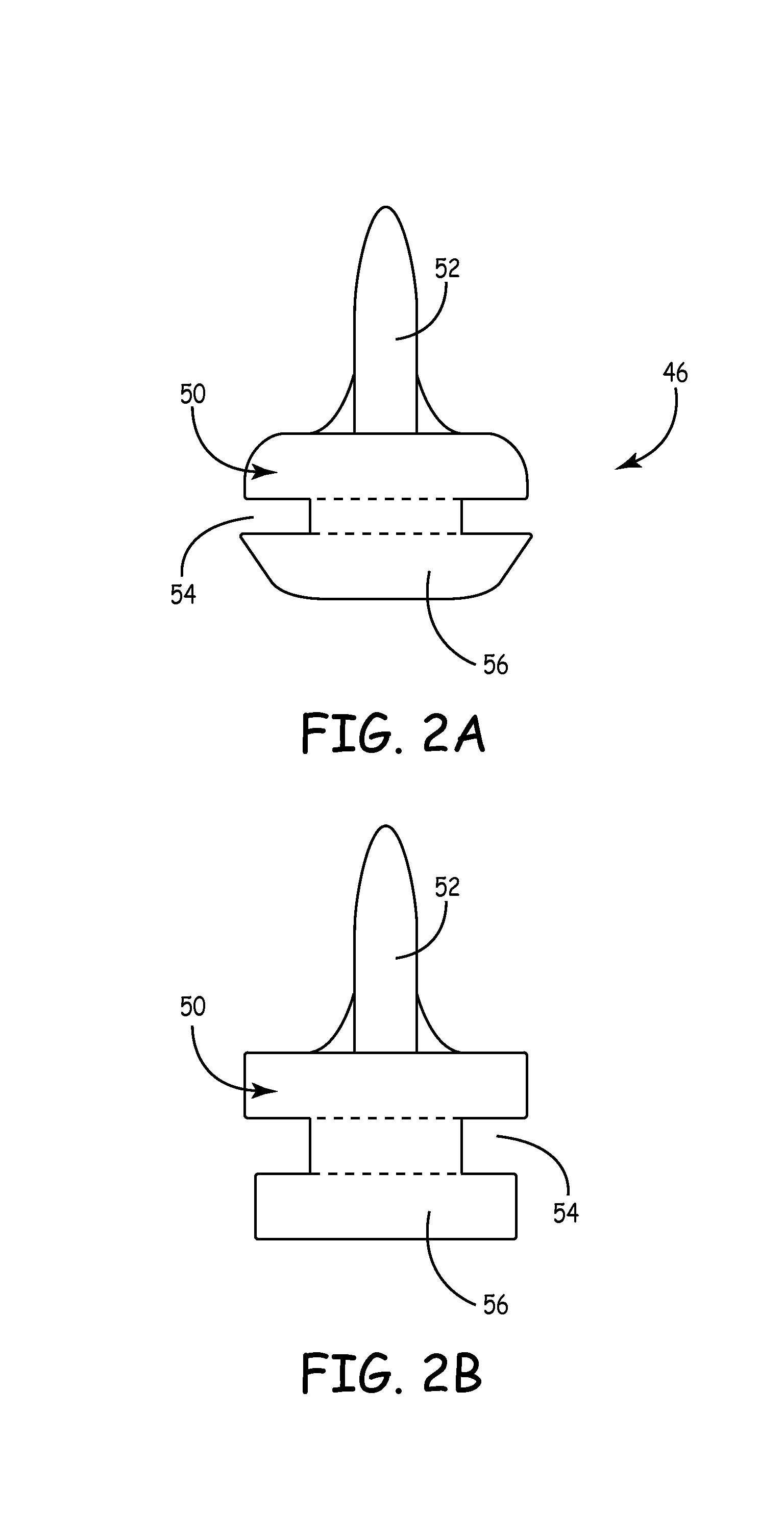Heart model
a heart and model technology, applied in the field of anatomical modeling, can solve the problems of limited options, a large number and a final complex series of selectively displayed two-dimensional representations
- Summary
- Abstract
- Description
- Claims
- Application Information
AI Technical Summary
Benefits of technology
Problems solved by technology
Method used
Image
Examples
Embodiment Construction
[0019]Referring to FIG. 1, a heart model 10 is illustrated, consistent with the principles of the present invention. Heart model 10 is a generally rigid structure that includes various anatomical cavities including a right atrial chamber 12 and right ventricular chamber 14. A portion of the venous anatomy includes a vein 16 representative of the superior vena cava. The vein 16 is generally rigid, having a passageway defined therethrough that is in communication with the right atrial chamber 12.
[0020]The extent of the cardiac anatomy and the accuracy of the heart model 10 can be varied depending upon the desired training, educational, or other intended purposed. For example, the entire heart including both atria and both ventricles may be included. Alternatively, only the left side of the heart, only the right side of the heart, or any portion thereof may be modeled, to reduce complexity for specific applications. In addition, any or all of the naturally occuring veins and arteries c...
PUM
 Login to View More
Login to View More Abstract
Description
Claims
Application Information
 Login to View More
Login to View More - R&D
- Intellectual Property
- Life Sciences
- Materials
- Tech Scout
- Unparalleled Data Quality
- Higher Quality Content
- 60% Fewer Hallucinations
Browse by: Latest US Patents, China's latest patents, Technical Efficacy Thesaurus, Application Domain, Technology Topic, Popular Technical Reports.
© 2025 PatSnap. All rights reserved.Legal|Privacy policy|Modern Slavery Act Transparency Statement|Sitemap|About US| Contact US: help@patsnap.com



